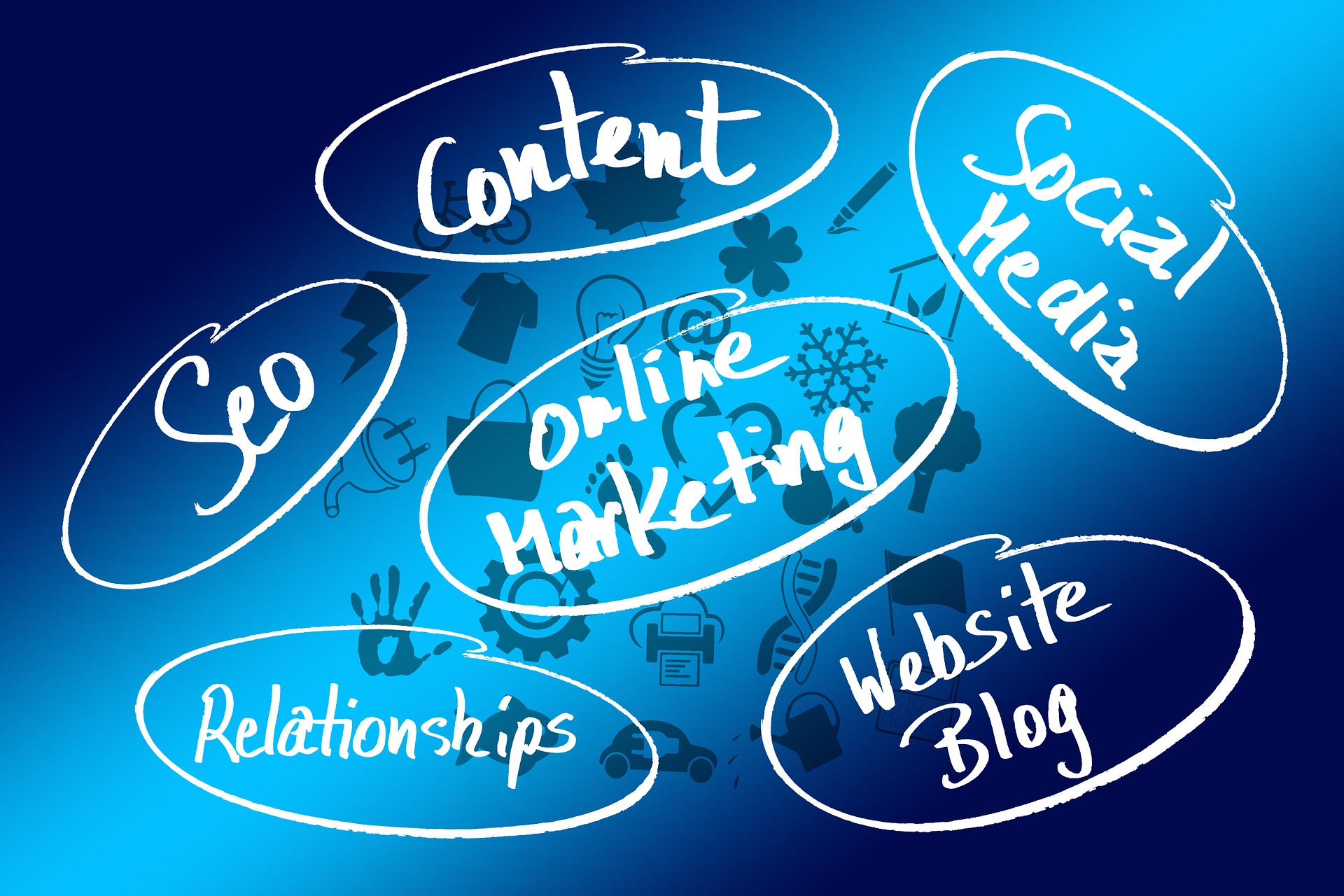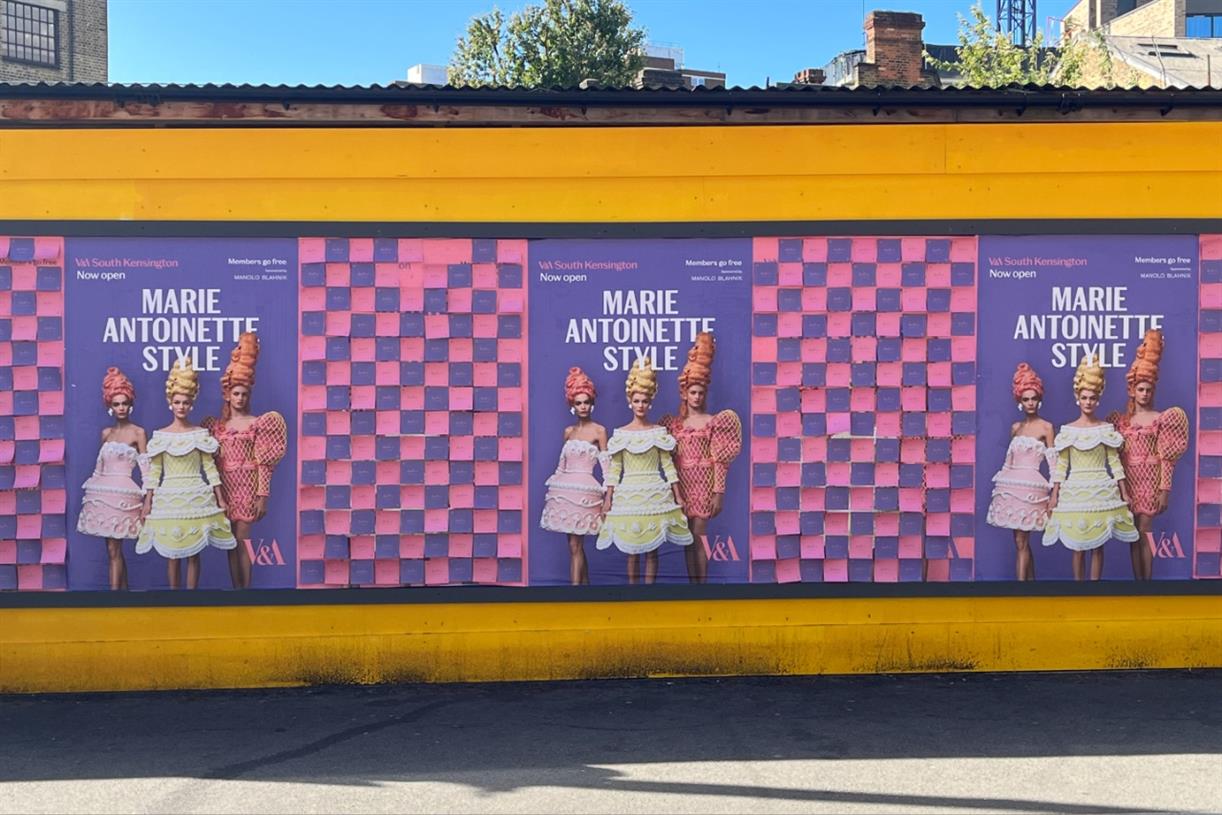The Essential Guide To Using Images Legally Online via @sejournal, @KristiKellogg
Ensure your use of online images is legally compliant. Our guide will help you navigate copyright laws and avoid legal trouble. The post The Essential Guide To Using Images Legally Online appeared first on Search Engine Journal.

The information in this article is not intended to and does not constitute legal advice. Only your attorney or your organization’s counsel can provide assurances that the information contained herein – and your interpretation of it – is applicable or appropriate to your particular situation.
Images are an essential component of online content – and it’s obvious why. Images aren’t just pretty—they’re powerful marketing tools that help you stand out.
They pique your audience’s attention, enhance your messaging, and significantly enhance the appeal and effectiveness of your content.
Whether you’re creating a social media post, a webpage, an ebook, a blog post, or something else, adding visuals goes a long way in improving the overall user experience.
However, you can’t just pull images off the internet and use them – and it’s your responsibility to determine if and how you can use the image without breaking the law.
If you violate copyright law – even accidentally – you can face serious consequences. Many online platforms, such as Google and YouTube, have copyright policies that streamline copyright claims and enforcement actions. Often, a minor violation will result in receiving a DMCA notice and the content being removed or demonetized. However, if a violation is egregious or impactful enough, you could face heavier consequences such as hefty fines, court trials, and, in extreme cases, even jail time.
In this article, we’ll explore how you can navigate these murky waters to ensure that you’re using images impactfully and legally online.
What Is Copyright Law?
Copyright law is complex and dynamic, and it requires a careful approach to using images online – especially in the wake of tech advancements like generative AI.
Every image – whether you find it on Google, social media, or a stock photo site – gains copyright as soon as it’s created, and it’s up to you to discern whether or not you have the legal right to use it.
Copyright is designed to protect the creative works of authors, photographers, artists, and other creators. It gives them the exclusive rights to use, distribute, and modify their creations.
Without such laws, creators would have few defenses against individuals and corporations alike simply stealing their work and using it for whatever purposes they desire.
And while the foundational principle of copyright remains unchanged, the landscape around these laws is always evolving.
A recent example of this is the CASE Act of 2020, which created a small claims solution to make it easier for creatives to make copyright complaints without the need for long, expensive legal battles.
This goes to show how important it is to understand and respect copyright law, as its goal is to balance the interests of creators with the need for the public to have access to creative works.
What Is Fair Use?
Another thing you should be familiar with if using images online is the fair use doctrine.
The doctrine of fair use is a legal principle in U.S. copyright law that allows limited use of copyrighted work without requiring permission in certain cases and circumstances. Some of these cases include commentary, criticism, news reporting, or educational purposes.
“Transformative” use of an image can also constitute fair use – which means altering the original visual in such a way that it takes on a new meaning, message, or expression and can include parody.
A search engine showing an image you searched for is an example of fair use.
Teachers and news organizations also have certain protections under fair use for how they use copyrighted material.
Fair use is very nuanced, but the main factors involved in determining whether something is fair use are:
The purpose and character of the use: Do you want to use the image for commercial or non-commercial purposes? Are you a non-profit organization, a customer packaged goods (CPG) brand, or a journalistic organization? The nature of the copyrighted work: Is it a photograph or an art piece? The amount and substantiality of the portion used: Are you using a small piece of the work or all of it? Is what you’re using considered the “heart” of the image or whatever it represents? The effect of the use on the potential market: By using this image, are you potentially negatively impacting the market value of the original?Given all of these factors, you should carefully consider whether fair use might apply to an image you would like to use online.
Fair use is not guaranteed protection and you may want to consult your general counsel before relying on it. If a policy for using copyrighted works doesn’t already exist in your organization (for example, editorial guidelines for a news organization) and the stakes of using a copyrighted work don’t necessitate the expense of consulting a lawyer, then you should not use content you don’t have explicit rights to.
General Guidelines For Using Images Online
As we’ve already established, anybody using images online has a responsibility to abide by copyright laws in order to avoid legal issues.
As part of this, you should understand that even if images online seem “free,” they might have hidden restrictions based on how they’re used, where they’re shared, and the purpose of using them.
When using images online – especially for commercial/marketing purposes – you should always:
Obtain proper licenses or permissions where required. As part of this, make sure to get signed releases for any images using trademarks, logos, identifiable people, or other private entities. Respect any terms of use associated with said images. Be careful when making fair use determinations. If you’re unsure, seek legal advice. When in doubt, seek permission directly from the copyright owner. This is the safest way to use an image, and we would recommend taking this path whenever possible.And, of course, ensure you stay informed on the latest developments in copyright law, especially as it pertains to your own activity.
Now, let’s get more specific on the types of images you can use online, and best practices for how to put them to use (or not).
1. Public Domain Images (a.k.a. ‘No Copyright’ Images)
Images in the public domain are free to use without any copyright restrictions.
This is because one of the following things is true:
The copyright has expired. The work never had a copyright, to begin with. The copyright holder released the work into the public domain, thereby waiving their right to copyright. The image is a U.S. work published before January 1, 1929.That last bullet is why you’ll often hear about certain works “entering the public domain” each year.
Generally, public domain images don’t require citation or permissions, making them a very useful resource when you’re looking for easy-to-use visuals.
But be careful; make sure you verify that the image is indeed in the public domain before using it.
Copyright-free images will have the Public Domain Mark 1.0 or the CC0 1.0 Universal Public Domain Mark, and you can obtain them on sites like Wikimedia Commons and Flickr Commons.
2. Creative Commons Images
Another great (and free) source of visuals is images with Creative Commons licenses.
Creative Commons is a non-profit organization that provides licenses allowing creators to make their works available to the public while retaining some control over their use.
This means, images under Creative Commons licenses are available for use, but with specific conditions based on the license type.
While some licenses allow for commercial use and even modifications to the original image, others do not – and often, you’re required to provide attribution for the original creator.
There are six different types of Creative Commons licenses that range in terms of how permissive they are and their requirements – but for marketing purposes, they essentially fall into two categories:
Those that allow commercial use. Those that don’t.Commercial use is defined as use that is “primarily intended for commercial advantage or monetary compensation.”
That compensation, however, can be direct or indirect. So, if you’re using an image in a blog post or on a webpage affiliated with a for-profit company, the use is considered commercial. This would also apply to social media content.
To that end, we would recommend only using Creative Commons photos that are allowed for commercial use – especially if you work for a for-profit company.
Beyond that, photos with a CC license can have other stipulations you must adhere to, including:
Attribution: This license lets others distribute, remix, tweak, and build upon the creator’s work as long as they credit the creator for the original creation. Attribution-ShareAlike: This license lets others remix, tweak, and build upon the creator’s work as long as they credit the creator and license their new creations under the identical terms. Attribution-No Derivatives: This license allows for the redistribution of an image as long as the image remains unchanged and is credited to the creator.As you search through the Creative Commons website, you can filter your search to find images that can be used commercially and/or modified.
3. Stock Photos
Stock photos have long been a favored image resource for marketers, and it’s not hard to see why. They’re a high-quality, convenient solution that often caters to commercial use cases.
Stock photo websites give you access to a massive offering of professional quality images that address almost any need or situation you can think of.
Creators can partner with stock photo companies to license their works to anyone willing to pay their licensing fee.
Buying a license for a stock photo (or paying for a subscription to the stock photo service itself) gives you free rein to use the photo in any way prescribed by the licensing agreement.
That last part is important. Stock photos still come with stipulations, and there are different licenses that apply to different images. These include, among others:
Royalty-Free (RF) – The most common license type, this gives you the ability to use the photo multiple times across different platforms with just one initial purchase. Rights-Managed (RM) – With this license, you get more specific usage rights based on the duration, geography, and how you’re distributing the image. Typically more expensive than RF, but it can be possible to secure exclusivity, meaning you’re the only one who can use that image in that way for a specific period. Editorial Use – This license applies to images that are intended solely for journalistic or newsworthy purposes – not commercial use. So, while a writer could use this photo for a newsletter or a blog, a brand could not use it for a Facebook ad, or a corporate homepage. This is typically reserved for images that feature recognizable products or brands, celebrities, events, etc.Stock photos are a great option for using images online – just be sure to always read the licensing agreement thoroughly.
4. Your Own Images
As far as using images legally online, this is always going to be your best option.
Creating your own images is a straightforward and simple way to avoid copyright infringement and ensure you’re not upsetting any creators out there.
If you’re the photographer, then there’s no danger of violating any copyright – because you own it. You have the flexibility to use the image as you wish, alter it, and distribute it anywhere, for as long as you like.
Plus, the photos will be entirely original, which can go a long way in engaging your audience and setting you apart from the crowd.
Don’t have a fancy camera on hand? Don’t worry. Thanks to advances in smartphone camera technology and accessible photo editing apps and software, you can easily create high-quality photography without spending a bunch of money on a DSLR.
To make your pictures look professional, make sure to consider lighting and background framing.
Alternatively, you could hire outside help like a photographer or designer – just make sure the contract grants you exclusive rights to ownership, use, and distribution of the photos.
And don’t forget to get signed releases from any individuals who might appear in your images.
5. Social Media Images (Only With Permission)
If you’re looking for compelling visual content, chances are you’re looking at social media. With a wealth of imagery to choose from, social media presents tempting opportunities for marketers looking to spiff up their brand messaging.
But beware: Images posted on social media platforms are copyrighted by the original creator who uploaded them – and they require permission from that owner to be legally used.
It’s vital to act responsibly and secure explicit consent from creators if you plan to use their content.
Giving credit to the original owner via a tag or comment is also best practice – and while some consider that to be enough, I recommend always seeking explicit permission first, especially as a brand.
If you use social media content without permission, it could result in legal action – and the legal fees and final judgment could be crippling.
Always err on the side of caution, and research the terms and conditions of the platform you’re using.
Let’s say you have a customer who posted an amazing image of your product on Instagram, and you’d like to use it – sending a simple direct message (or leaving a comment) asking for permission is quick and easy and will protect you – and chances are you’ll get a yes.
It’s worth noting that using native tools to reshare images in-platform is typically okay. That means that you can go ahead and retweet something, or share a photo to your Instagram Story that tagged your brand, just make sure to credit the creator.
Similarly, remixes and duets on platforms like TikTok are more flexible, as the creator implicitly gives permission for their content to be adapted when they enable those features.
But remain mindful of the content itself, the terms of the platform, and the intentions of the original creator.
6. AI-Generated Images
Due to the meteoric rise of generative AI over the past few years, there’s been a surge in AI-generated images.
Now, you can use tools like DALL-E, Midjourney, and ChatGPT to create visual content using only a simple prompt – and this brings up a lot of questions (and debates) around the legality, copyright, and authorship of AI-created content.
There’s no crystal clear answer for you here. This is an issue that is actively evolving, and regulations and policies are certain to keep developing.
[Editor’s note:] SEJ does not recommend publishing content outputs from generative AI models, including images. Some platforms may offer liability protection, such as Shutterstock, which trains a specific model on proprietary images. But always read the fine print, understand how the models are trained, and consult a legal professional.
7. GIFs
The internet loves GIFs.
But while GIFs abound throughout online content, that doesn’t mean their use is legal. In reality, it’s a confusing landscape without clear guidelines.
For one thing, it can be argued that GIFs fall under the doctrine of fair use, which I covered above.
You could claim GIFs are used for commentary, criticism, or parody.
You could also argue that GIFs are a “transformative” use of the original work, as a brief, looping clip of something is not representative of the entire piece of content – and, therefore, doesn’t undermine the value of the work as a whole.
Still, this does not constitute blanket permission.
Technically, if you wanted to be operating entirely without risk, you would need written releases from the copyright holder of the original work and the people who appear in the GIF. That sounds like a lot of effort for something that will probably amount to a dead end.
You could get away with it, but why risk it?
Our official recommendation is to simply avoid using GIFs. That way, you can avoid the possibility of getting slapped with a cease and desist order – or worse.
That said, if you insist on using GIFs, here are a few quick tips:
Create your own GIFs from content you own or have permission to use. With some simple design work, or help from online tools, you can convert your existing content into custom GIFs that you can use to your heart’s content. This is the only way I would confidently recommend leveraging GIFs in your marketing. Understand copyright law and fair use. Before deciding to use a GIF, consider the four factors of fair use – purpose and character of the use, nature of the copyrighted work, amount and substantiality of the portion used, and the effect of the use on the potential market for the copyrighted work. Source from reputable platforms. Some platforms like Giphy have existing licensing agreements with content creators and copyright owners, making their GIF libraries generally safe to use. However, you should still review each platform’s terms of use and licensing agreements before making the call.Proceed at your own risk.
In Summary
Images are an essential part of online content.
As such, marketers will inevitably need to use them in their digital marketing efforts – and it’s important to understand how to do so legally and responsibly.
By keeping yourself informed on the latest legal developments, developing an understanding of copyright licenses, and practicing due diligence before leveraging images online, you can create compelling and engaging visual content without the risk.
More resources:
41 Places To Find Free Images Online That You Will Actually Want To Use 11 Best Image Search Engines For Visual Content Content Marketing: The Ultimate Beginner’s Guide To What WorksFeatured Image: VectorMine/Shutterstock

 Tfoso
Tfoso 
































